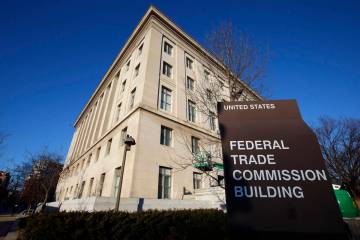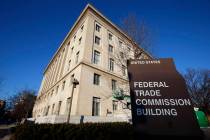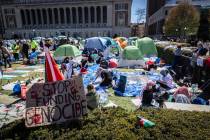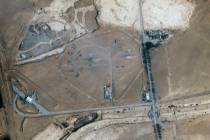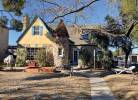Panel recommends Westside School be designated local historic site
One of Brenda Williams' most touching memories of the Westside School, Las Vegas' oldest schoolhouse, came years after she had graduated and left school days behind.
It was 1964. She was working as a bank teller -- the first black bank teller in town -- and her former principal, Doris French, walked in and saw "Brenda Williams" on her name tag.
"She said, 'No, your name is Brenda Joyce Smith,'" Williams said, referring to her maiden name.
The fact that French remembered her was a surprise, although it shouldn't have been, she said.
"That was the caring concern of the teachers," Williams said. "They knew who you were."
The school, which stands at the corner of Washington and D streets, no longer is used for education. It closed as a school in 1967. But its historical value for its place in local black history and the way its development mirrored the population booms that defined Southern Nevada have been recognized, and the school is in line to receive an additional layer of protection.
On Wednesday, the Las Vegas Historic Preservation Commission recommended that the school join the Las Vegas Historic Property Register as a landmark.
The designation, which must be approved by the City Council before it goes into effect, would give the city additional review powers over changes to the school's exterior. Las Vegas owns the building.
"It puts a permanent flag as a historical site, for African-Americans in particular," said City Councilman Ricki Barlow, whose ward includes the site. "That was the only school that African-Americans could attend."
The original two-room school building from 1922 dates to a time before what is known as West Las Vegas -- the area generally bordered by Carey Avenue on the north, Bonanza Road on the south, Interstate 15 on the east and Rancho Drive on the west -- became the hub of local African-American life. The school didn't have any black students until 1926.
Two classrooms were added in 1928, allowing the school to teach grades one through four. A wing of eight classrooms was added in 1948, and the school could accommodate students in first through eighth grades.
The school can be associated with the waves of new residents who arrived in the 1930s and 1940s, but the most significant is the latter group, many of whom were black residents coming from the rural South, according to an assessment by the National Register of Historic Places.
"Many blacks had their first experience with racially integrated education at Westside," the assessment said. "It was also the school they attended while making the transition from a rural to an urban lifestyle.
"It was the school for black citizens, enabling many to obtain a basic education and/or go on to secondary educational facilities."
The school became known for its athletic successes and a disciplined marching band, said Monroe Williams, Brenda Williams' husband, who started attending the school as a kindergartner in 1945.
But students there also faced the segregated realities of the day, such as the fact that job prospects were limited. One could be a cop, but only in the West Las Vegas area, or a maid, porter or laborer, Monroe Williams said.
"The academics were stressed, but there was this subliminal thing ... 'I'm not going to be able to use it,'" he said.
That is why not many of his classmates joined him in finishing high school. Times changed, however, and he became a Las Vegas firefigther, retiring as a captain.
"The teachers stressed every day: 'Opportunity only knocks once,'" he said. "I probably heard that a thousand times."
Etta Hodges, who was Etta McLemore when she attended Westside, said she remembered several firsts at the school in the late 1940s when she was a student. Her first black teacher, for example.
"That's the first time that I heard any black history," she said.
While it was interesting at the time, "later, I realized how much we had been missing all those earlier years," she said.
"It was our school. It was in our community. It belonged to us."
The school was listed in the National Register of Historic Places in 1979.
The Historic Preservation Commission has a standing recommendation that all city-owned historic sites be added to the local historic property register, not only to honor the history but to provide some protection if a property is transferred or sold.
The building houses radio station KCEP-radio, 88.1 FM, and the administrative offices of the Economic Opportunity Board, which provides aid to low-income households.
A meeting is scheduled at 10 a.m. March 25 in the city's Development Services Center, 731 S. Fourth St., to discuss future uses of the campus, Barlow said.
"What should the school be turned into, as far as making it a watering hole for the community, to be more interactive than it is in its current state?" he said. "I'm looking to increase the usage and identify the highest and best use."
Contact reporter Alan Choate at achoate@ reviewjournal.com or 702-229-6435.








